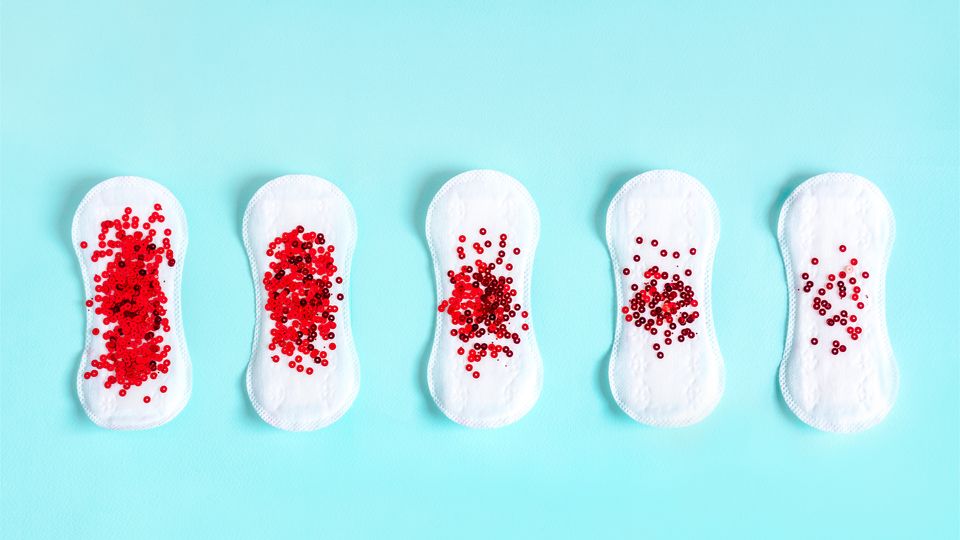Non-Menstruating People Report Menstrual Symptoms After COVID-19 Vaccination

Complete the form below to unlock access to ALL audio articles.
This article is based on research findings that are yet to be peer-reviewed. Results are therefore regarded as preliminary and should be interpreted as such. Find out about the role of the peer review process in research here. For further information, please contact the cited source.
The potential impact that COVID-19 vaccination can have on the menstrual cycle is being researched by several groups around the world. To date, some studies have demonstrated that COVID-19 vaccination may cause a small change to the timing of the menstrual cycle, but that this change is only temporary.
Research thus far has focused primarily on the study of individuals that menstruate each month. But what about individuals that typically do not menstruate, such as those taking testosterone or other gender-affirming hormones?
Scientists at Washington University in St. Louis recently conducted an online survey on menstrual experiences post-vaccination and focused their attention on a subset of responses that came from individuals that typically do not menstruate. This is critical research, says Dr. Katharine Lee, a postdoctoral research scholar in the division of public health sciences at Washington University in St. Louis and first author of the study, because “people who are not cis women are too often left out of the discussion”.
From the 160,000 participants that took part in the survey, 552 individuals said that they did not usually menstruate. Many of these individuals selected multiple options when asked to choose a gender category: 460 identified as transgender, 373 identified as male, 241 identified as non-binary and 124 identified as genderqueer/ gender non-confirming.
The data shows that approximately one-third of participants received breakthrough bleeding post-vaccination. Nine percent said that they experienced chest or breast soreness and 46% reported other symptoms that, in their experience, would usually be associated with menstruating. The survey also offered open text fields that invited participants to discuss how any period-associated symptoms had impacted their mental health, with many respondents stating that they had suffered anxiety, depression, panic attacks and gender dysphoria
Technology Networks spoke with Dr. Lee to learn more about why it’s important that menstrual cycle research is more inclusive, how the survey was conducted and the insights gained from this research.
Molly Campbell (MC): Please can you explain how you classified participants as those that “do not menstruate” for the purpose of this research study?
Katharine Lee (KL): We asked them in the survey using a multiple-choice question, which was phrased: “My menstrual cycle (length of time from one menstrual period to the next) is typically…” and had the option to select: “I rarely or do not menstruate right now.” We then (for this presentation) looked at the subset of people who stated they used gender affirming hormones and further specified some form of testosterone.
MC: Previous research studies have focused on COVID-19 vaccine related menstrual cycle changes in cis-gender women. Can you expand on why this is problematic?
KL: Because there are lots of people who are not regularly menstruating cis-gender women and they deserve to be represented in research as well.
MC: Can you discuss the key findings from the online survey? What COVID-19 vaccines had participants received? Were the surveys conducted after one, two or three vaccine shots? Were any of the findings statistically significant?
KL: Respondents received a variety of vaccines, but predominantly Pfizer and Moderna. The surveys allowed people to participate after at least one dose of a vaccine, but many people (almost 400) had both doses when they took the survey. Our survey closed before booster doses were broadly recommended. The results reported here are predominantly descriptive summary statistics, as the presentation format necessarily limits the scope of analyses.
MC: Can you discuss the demographics of the study sample?
KL: We focus here on people aged 18–50 years who are not cis-gendered women and who take testosterone for gender affirming reasons. Further information is available in the press release
MC: Can you discuss the applications of this online research study?
KL: I hope this work highlights why it is important to be inclusive of trans, nonbinary, gender queer and other gender diverse people when conducting research and educating health care providers.
MC: What are your next steps in this research?
KL: We are conducting additional analyses and have started a follow-up survey to collect more detailed information.
MC: Are there any limitations to the study that you wish to highlight?
KL: This survey was an opt-in survey that used what is sometimes called snowball sampling. This means our data cannot be used to estimate the prevalence or incidence of these outcomes for the population more broadly, we can only describe what we see in this sample. However, we hope that our results encourage other researchers who do large-scale population-based research or clinical trials to ask about these outcomes as part of their study designs.
Dr. Katharine Lee was speaking to Molly Campbell, Senior Science Writer for Technology Networks.



